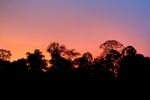The Detailed Environmental Impact Assessment (DEIA) for a proposed coal plant in Sabah is full of holes, according to activists with the organization Green SURF (Sabah Unite to Re-Power the Future), which opposes the plant. The official environmental report from Lahad Datu Energy lists species not endemic to Borneo, mistakes the nearest ecosystem to the coal plant, and confuses indigenous groups. Even more seriously, the DEIA leaves out information on the coal plant’s specifics and possible ‘green’ alternatives.
If built, the controversial coal plant will sit adjacent to the Coral Triangle, one of the world’s most biodiverse marine regions on Earth, and 20 kilometers from Tabin Wildlife Reserve, home to Critically Endangered Sumatran rhinos and Endangered Bornean orangutans. Opponents also say that waste discharges form the coal plant will also damage fish stocks, imperiling the livelihoods of artisan fishermen in the region.
The consultants’ environmental report considering these and other issues is flawed say critics. While the DEIA discusses the dusky langur monkey (Semnopithecus obscurus) in relation to the coal plant, this species is not present in the region, and in fact is not native to any area of Borneo. The report also claims erroneously that indigenous groups to Sabah, the Orang Sungai and Tidong, originated in Indonesia. Most problematic, however, the DEIA makes a number of claims based on a mistaken ecosystem.
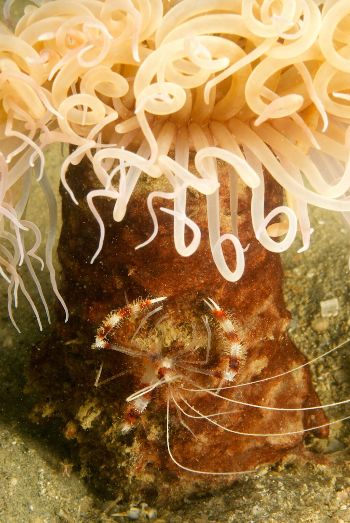 The DEIA confused soft mud flats with coral reef ecosystems. Pictured here: a mud flat coral and crustacean off Kampung Sinakut in Lahad Datu. Photo courtesy of GREEN Surf. |
“The marine ecology was wrongly presented as a coral reef area (the marine area adjacent to the proposed site) when in fact this is a sand and mud flat area (soft bottom),” Lanash, Thanda, a WWF-Malaysia officer, told mongabay.com.
She adds that given that the report confuses the coal plant’s adjacent environment “the methodology used to assess the area was not appropriate, indicator species chosen were also inappropriate [and] sampling sites chosen were not representative of the area.”
More issues with the DEIA were raised when activists realized what the report omitted, rather than mistook. For example information on the coal plant itself is largely absent, says Thanda: “there are no details of specifications of parts [of the coal plant]. No efficiency rates, no values of design standards are presented, no plant performance summary.”
Missing from the report is basic information on gross power, efficiency, and heat rate.
According to the local NGO LEAP (Land Empowerment Animals People), the DEIA also makes no reference to the cost of the coal plant, transmission lines which could cut through protected areas, and dismisses without proper analysis possible energy alternatives to the coal plant.
Given the issues raised about the DEIA, Chief Minister Datuk Seri Musa Aman has announced the report will be re-evaluated by Sabah’s Tourism, Culture and Environment Minister Datuk Masidi Manjun, who has a long record of working on environmental issues.
Concerns ignored at recent meeting
While a recent meeting between the Sabah state government and the consultants with the DEIA provided an opportunity to discuss these and other issues, according to attendees such issues were largely ignored by officials and sometimes even mocked.
“DEIA Consultants and project proponent were clearly heard laughing when the State Government asked intelligent and valid questions,” Thanda said who was present at the meeting.
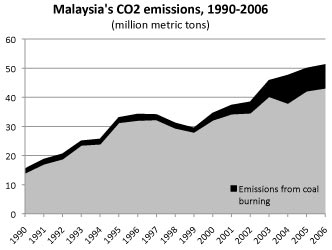
|
Director of LEAP, Cynthia Ong, who also attended the meeting, told mongabay.com that at one point a consultant said that ‘fish will not be significantly affected [by the coal plant] because they can swim away’.
“Everyone laughed [at this] and the consultant looked puzzled that they did […] I did not realize at the time but this phrase is actually in the DEIA,” Ong says.
Thanda adds that consultants simply ignored serious questions, claiming that such issues were ‘out of the scope of their studies’, yet she asks, “how can questions with regards to green technology and local fisheries as well as aquaculture security be outside the scope of their study?”
When asked if the consultants addressed any of the state government’s concerns, Ong said, “absolutely not”.
The proposal for the coal plant in Sabah has run into opposition and controversy for years. The site for the plant has been moved twice before due to environmental and local concerns before settling on Felda Sahabat near Lahad Datu.
“The third site was chosen without any form of feasibility study. In fact no feasibility study was ever conducted for the use of coal for Sabah,” adds Thanda.
An analysis commissioned by Green SURF and conducted by Renewable and Appropriate Energy Laboratory (RAEL) at the University of California Berkeley found that energy from biomass waste and hydropower would be cost-competitive with coal power in the region.
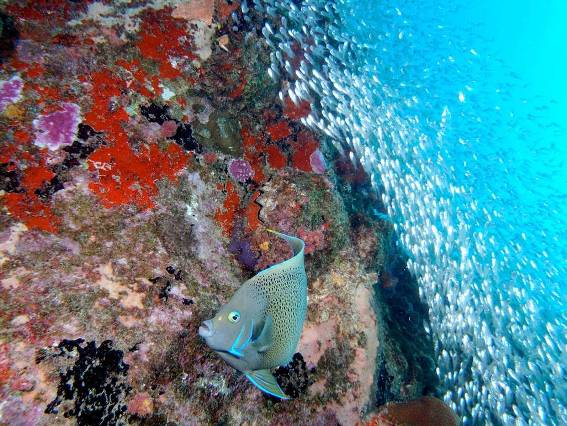
The rich and diverse marine life of Sabah not only supports local fishing, but draws tourism from around the world. Sabah has an international reputation as a ‘green state’, campaigners fear that a coal plant set on a pristine beach near primary rainforest will sully that image. Environmentalists say thermal heat from the coal plant could harm nearby coral reefs. Photo by: Borneo Dream.
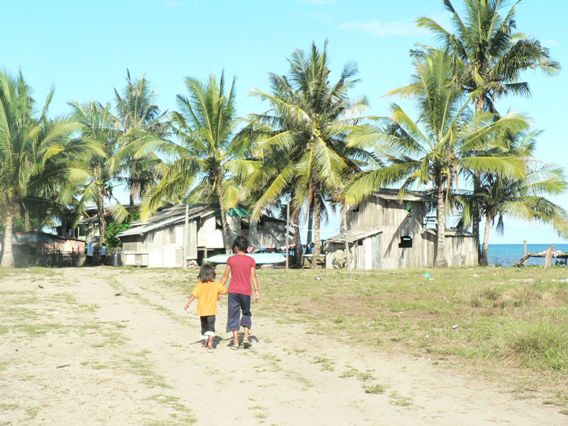
Children walking home to Kampung Sinakut village: the site for the proposed coal fired power plant. Photo courtesy of Green SURF.
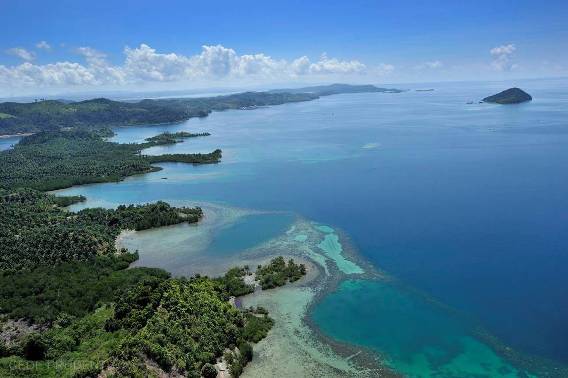
The coal plant will be built on the northern edge of Lahad Datu Bay. Photo by: Cede Prudente.
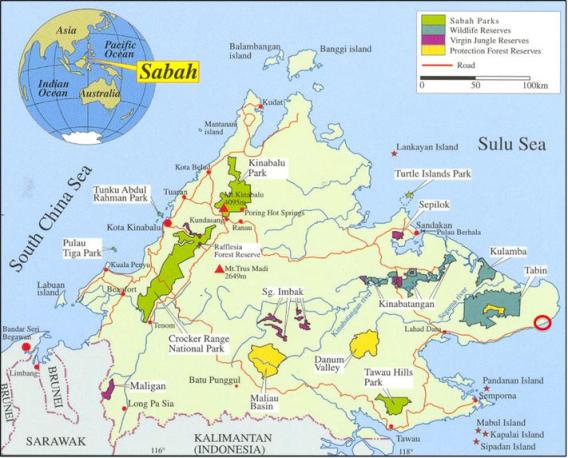 The circle denotes the coal plant. Tabin Wildlife Reserve is to the west, Semporna (Tun Sakaran Marine Park) is to the south. Map courtesy of Green SURF.
The circle denotes the coal plant. Tabin Wildlife Reserve is to the west, Semporna (Tun Sakaran Marine Park) is to the south. Map courtesy of Green SURF.
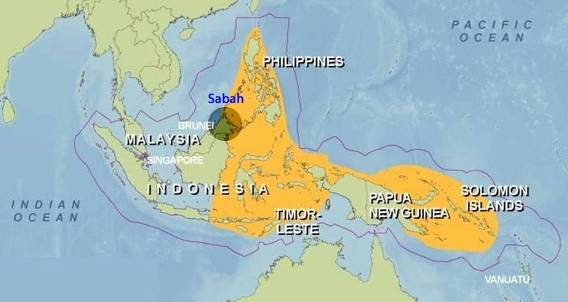
Map shows Sabah’s place in the coral triangle. Map courtesy of Green SURF.
Related articles
Photos reveal paradise-like site for coal plant in Borneo

(05/21/2010) With the world’s eyes on the environmental catastrophe in the Gulf of Mexico, many are beginning to ponder the rightness of not just America’s, but the world’s dependence on fossil fuels. Yet large-scale fossil-fuel energy projects continue to march ahead, including one in the Malaysian state of Sabah on Borneo to build a 300 MW coal plant, which has come under fierce opposition from locals (already the project has been forced to move locations twice). The newest proposal will build the coal plant, as photos below reveal, on an undeveloped beach overlooking the Coral Triangle, one of the world’s most biodiverse marine environments, with transmission lines likely running through nearby pristine rainforest that are home to several endangered species, including orangutans and Bornean rhinos.
Fishermen express doubts about coal plant overlooking their fishing grounds

(06/13/2010) Local fishermen in the Malaysian state of Sabah are uncertain of their future, if the government pushes ahead to build a 300 megawatt coal power plant. They have been told they will be moved from their current seaside village to one deeper inland, and while the coal plant will provide manual labor work in its building stages, the fishermen express doubt about the impacts over the long-term effects of the coal plant on their livelihood. “Someone mentioned that maybe we have to move to Sungai Merah, which is quite far from our village. We are also worried because Sungai Merah is not next to the sea like [our village] is,” local fishermen, Ali Hia, told Green SURF and Save Sandakan members—two local organizations opposed to the coal plant—who recently visited the seaside village of Kampung Sinakut, site of the proposed coal plant.
Analysis shows Borneo can say ‘no’ to coal power
(03/17/2010) Plans for a coal power plant in the Malaysian state of Sabah in northern Borneo have run into stiff opposition. Environmentalists say the coal plant could damage extensive coral reef systems, pollute water supplies, open rainforests to mining, and contribute to global climate change, undercutting Sabah’s image as a ‘green’ destination. The federal government contends that the coal plant is necessary to fix Sabah’s energy problems. However, a recent energy audit by the Renewable and Appropriate Energy Laboratory (RAEL) at the University of California Berkeley shows that pollution-intensive coal doesn’t have to be in Sabah’s future.
Coal plant could damage rainforest reserves, coral reefs, palm oil plantations in Malaysian Borneo
(12/20/2009) A proposed coal-fired power plant in Malaysian Borneo could damage the region’s world-renowned coral reefs, pollute air and water supplies, open Sabah’s biodiverse rainforests to mining, and undermine the state’s effort to promote itself as a destination for “green” investment and ecotourism, warn environmentalists leading an effort to block the project. The scheme, which is backed by the federal Tenaga Nasional Berhad and state energy company, Sabah Electricity Sdn. Bhd, has faced strong opposition and already been forced to re-locate twice since it was conceived more than two years ago. The 300-MW plant is now planned for a coastal area that is situated in the middle of the Coral Triangle/Sulu Sulawesi Marine Ecoregion, an area renowned for astounding levels of biodiversity.
